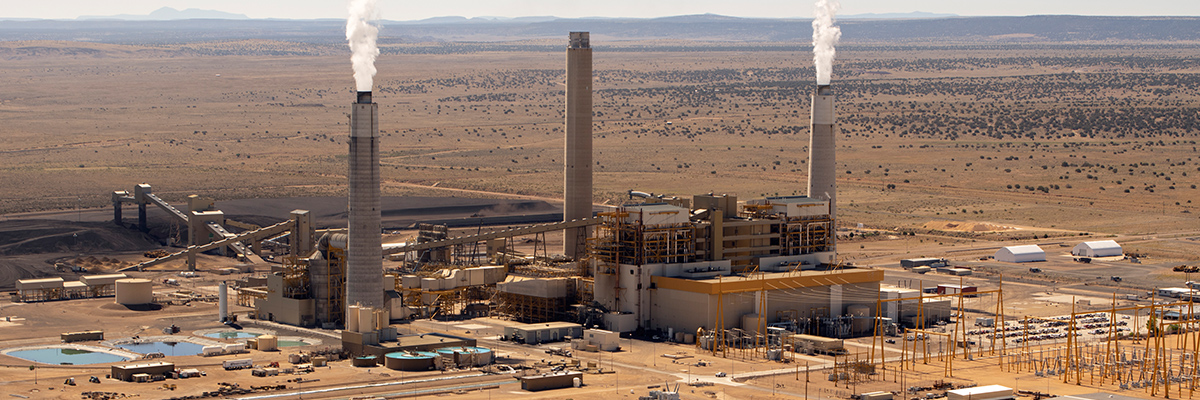
Coal Community Transition FAQ
As part of SRP’s 2035 Sustainability Goals, we are committed to minimizing our carbon footprint and delivering a cleaner energy future for Arizona and the communities we serve.
On this page:
On related pages:
General questions
A coal community transition (CCT) refers to a community’s transition after a coal power plant is retired or converted to another type of generation and often includes strategic planning to strengthen community capacity.
SRP’s goal is to support the communities impacted by our transition to natural gas as they navigate this shift.
SRP has dedicated internal leadership and staff who are committed to assisting the communities in this transition to a new economy. The team includes staff with experience in economic analysis, economic development, education, entrepreneurial activity, legal, natural resources, government affairs and other disciplines. SRP has also partnered with a small group of external experts and Arizona State University to help the community think through and act on the most important challenges to overcome for shaping the future of the community. For example, the team supported several broadband infrastructure grant applications for the region. While broadband has been a major focus of work, there are also other areas like transportation, education, workforce development and housing that are targeted areas for development.
Employee and Community Engagement
SRP has established a Coal Communities Transition team that is working with and assisting community leaders as they work to mitigate the projected impact to these communities. The CCT team will support impacted communities to identify new economic opportunities.
Yes, if an employee is offered another position, he or she will be provided with the training needed to be successful.
Yes, SRP has discussed anticipated employee reductions with the impacted communities and meets regularly with communities' leadership to discuss challenges and opportunities, and work together to plan and develop strategies to mitigate the impact.
Employment at Coronado Generating Station (CGS)
Yes.
SRP is committed to supporting employees throughout the transition. CGS employees interested in continuing their careers at SRP are being encouraged to bid on other available positions within the organization.
CGS employees have developed critical skills and experience which we want to retain at SRP. CGS management and SRP’s Human Resources team have partnered to provide CGS employees with tools and resources to make informed decisions and help prepare for the future.
Economic impact study
Economic Impact Analysis (EIA) is a methodology for evaluating the impacts of a project, program or policy on the economy of a specified region within a certain time.
An EIA can provide critical information on the economic impact of business activities that aid local communities to make more informed decisions.
The EIA will help identify the industries and areas that will be most affected by the coal plant closures. It also will help local leaders plan for the plant closures by identifying when they can expect the impacts and identifying alternative economic development opportunities that might present themselves. Also, the study may help leaders recognize which of the affected industries and employee skills may present a good match for these opportunities. Finally, the EIA will provide supporting documentation that may aid in securing grant applications to help cushion the impact of the closure.
Economic impact is typically measured using three metrics: (1) employment, (2) household income or wages, and (3) economic output. Employment (or jobs) is the easiest one. Typically, employment impact is reported as a headcount of jobs — not in terms of full-time equivalents. Output is the total amount of goods and services produced in an economy within a specified time. Household wages include base pay plus bonuses, stock options, severance pay, profit distributions, the cash value of meals and lodging, tips, and other gratuities.
Through three types of spending patterns:
Direct impact: Spending through the operations of the coal plant and its employees spending their paychecks. For example, plant expenditures on environmental services.
Indirect impact: This initial direct spending ripples through the business supply chains (vendors) until it is exhausted.
Induced impact: All this business spending induces higher incomes of the owners and employees, and they spend this increased income, which produces further economic activity.
The total impact is a sum of all three.
Economic impact studies traditionally focus on the final dollar number. Unless specified, they may not account for the adverse or positive social, environmental or cultural impacts. The researchers of the study may also not connect these findings to implications for policy or future steps.
Salt River Project and Tucson Electric Power each provided 50% of the funding to conduct the study.
Tribal nations
Yes. SRP is seeking to actively engage local Tribal Nations and associated communities.